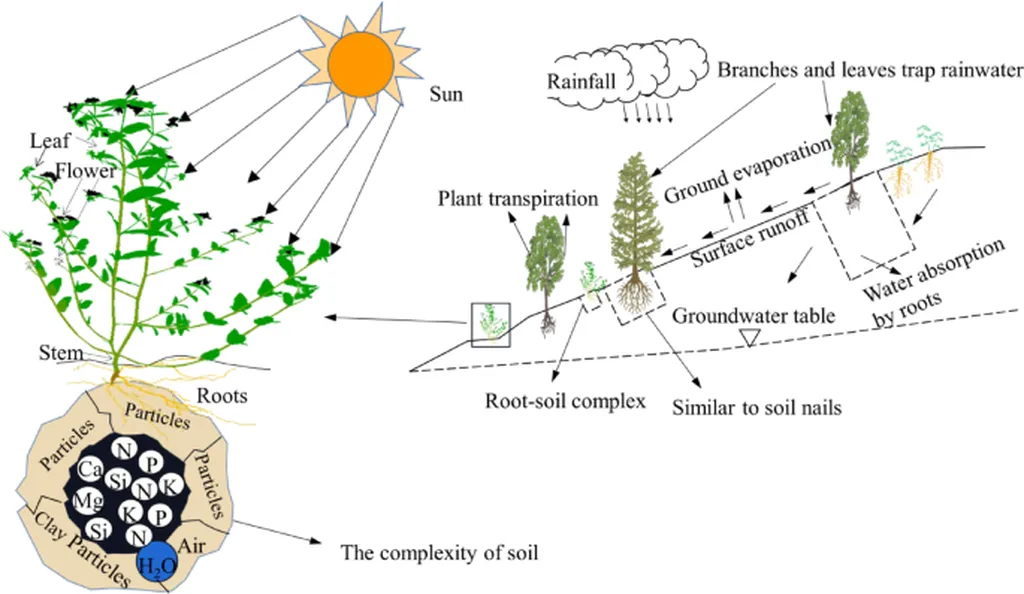In the heart of China’s Yangtze River region, a groundbreaking study is reshaping our understanding of slope protection and soil reinforcement, with significant implications for the energy sector. Led by Dr. Jiang Baoying of the National Key Laboratory of Water Disaster Prevention and Nanjing Hydraulic Research Institute, the research delves into the intricate relationship between herbaceous plant roots and slope stability under advanced rainfall patterns.
The study, published in *Yantu gongcheng xuebao* (translated to *Rock and Soil Mechanics*), focuses on the root systems of Agrostis stolonifera and Paspalum notatum Flüggé, grown for 12 months at a density of 10 + 10 g/m². The findings are particularly relevant for ecological restoration projects along shorelines and riverbanks, where slope protection is crucial for maintaining infrastructure and preventing erosion.
Dr. Jiang and his team simulated advanced rainfall patterns to observe slope deformations and variations in water content, pore pressure, and suction. Their research revealed that the stability of soil slopes is significantly influenced by the initial 150 mm/h rainfall, while subsequent 50 mm/h rainfall has a lesser impact on vegetated slopes. “The early stages of rainfall are critical,” Dr. Jiang explained. “This is when the roots play a pivotal role in maintaining slope stability.”
The study also found that herbaceous roots improve the stability of the top 30 cm of soil but can deteriorate the stability of the 35 cm to 60 cm layer near the root soil interface. Deeper soil layers, beyond 100 cm, are minimally affected by the roots. However, the roots do prolong slope stability, reduce soil erosion, and protect soil and water.
For the energy sector, these findings are particularly relevant. Energy infrastructure, such as pipelines, power lines, and renewable energy installations, often requires stable slopes for safe and efficient operation. “Understanding how plant roots interact with soil under different rainfall conditions can help us design more effective and sustainable slope protection measures,” said Dr. Jiang.
The research suggests that while herbaceous roots can significantly enhance slope stability, they should be used in conjunction with other engineering structures for long-term stability. This integrated approach could lead to more resilient and cost-effective solutions for slope protection in the energy sector.
As the world grapples with climate change and its associated impacts, including more intense and unpredictable rainfall patterns, this research offers valuable insights. It provides a data base and theoretical framework for constructing ecological bank protection projects, particularly in the middle and lower reaches of the Yangtze River.
Dr. Jiang’s work is a testament to the power of interdisciplinary research, combining hydrology, soil mechanics, and ecology to address real-world challenges. As the energy sector continues to evolve, such innovative approaches will be crucial in ensuring the stability and sustainability of critical infrastructure.
In the words of Dr. Jiang, “This research is not just about understanding the past; it’s about shaping the future of slope protection and ecological restoration.” And for the energy sector, that future looks increasingly green and stable.

